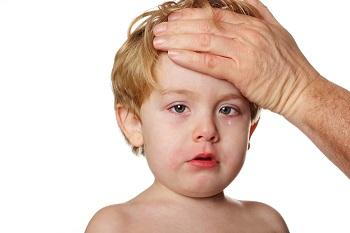



 Many people mistake a common cold for sinusitis, and vice versa, as the symptoms of a cold and a sinus infection can be quite similar to each other because the same viruses often cause both conditions. Additionally, since the nose and sinuses are connected, it is possible for viruses to move easily between the nasal passages and the sinuses.
Many people mistake a common cold for sinusitis, and vice versa, as the symptoms of a cold and a sinus infection can be quite similar to each other because the same viruses often cause both conditions. Additionally, since the nose and sinuses are connected, it is possible for viruses to move easily between the nasal passages and the sinuses.
Your child may feel run down, have a low-grade fever, post-nasal drip and a sore throat. So is it a common cold or a sinus infection? Typically, a cold can definitely morph into a sinus infection, but there are some classic symptoms for each illness that can help distinguish between the two.
With a cold, there is a cluster of symptoms that your child might be experiencing, including:
If your child has a cold, they may even experience a cough or a headache, and it can often last from three to seven days with or without any treatment. Your child develops a cold from a virus in which the symptoms usually build slowly over the course of a day or two, peak by days three or four, then slowly improve around the fifth or seventh day.
With a cold, treatment might include supportive care, fluids and chicken soup. Drinking plenty of water is also beneficial as it helps to hydrate your child. By hydrating your child through water consumption, you can help to flush out the infection because it liquefies the mucus. There are also medications available to help make your child more comfortable as the cold passes.
Sometimes colds can set in the sinuses and cause swelling, which then prevents the flow of mucus and turns the cold into a sinus infection. Sinusitis is the inflammation of the sinuses that can be caused by a cold, an infection or allergies. Any swelling of the sinuses can produce symptoms such as:
Your child may also complain of being tired, having a difficult time breathing through his or her nose, decreased sense of smell and restless sleep. If your child develops a cold every month or every other month, this is because his or her sinuses are flaring up and it is probably not a cold, but chronic sinusitis.
The main difference between a common cold and sinusitis is that a cold comes around once a year and lasts for three to five days, and then is gone and your child most likely will not experience it again until next year. Acute sinusitis typically lasts less than four weeks, with chronic sinusitis lasting more than 12 weeks. So if your child’s symptoms last more than a week, odds are they are experiencing a sinus infection and should visit your pediatrician.
By visiting your child’s pediatrician, you can help your child breathe easy once again. Whether it is a common cold, or a more serious sinus infection, your child’s pediatrician is available to help relieve their symptoms.
This website includes materials that are protected by copyright, or other proprietary rights. Transmission or reproduction of protected items beyond that allowed by fair use, as defined in the copyright laws, requires the written permission of the copyright owners.